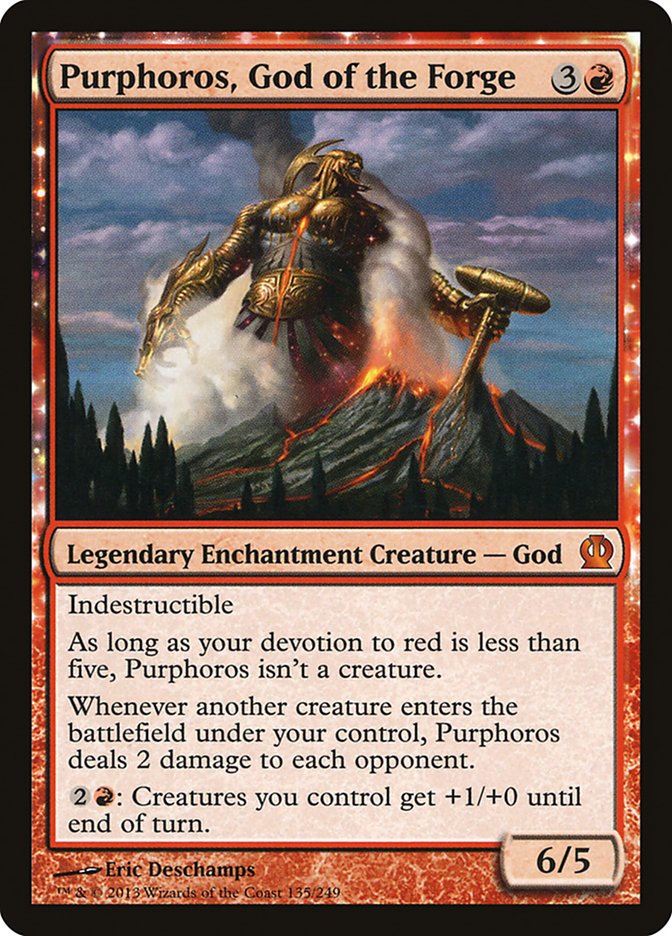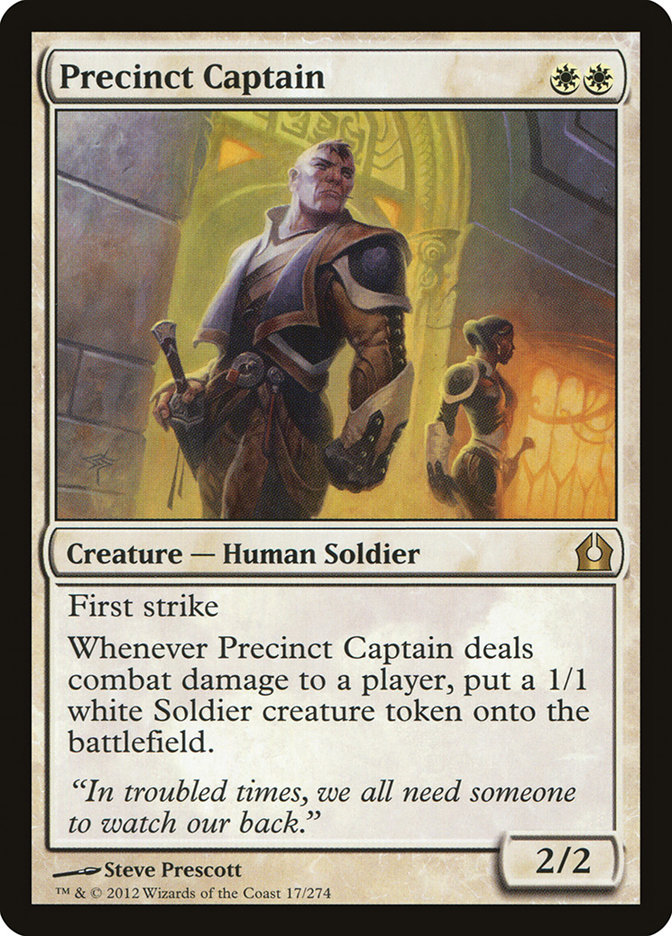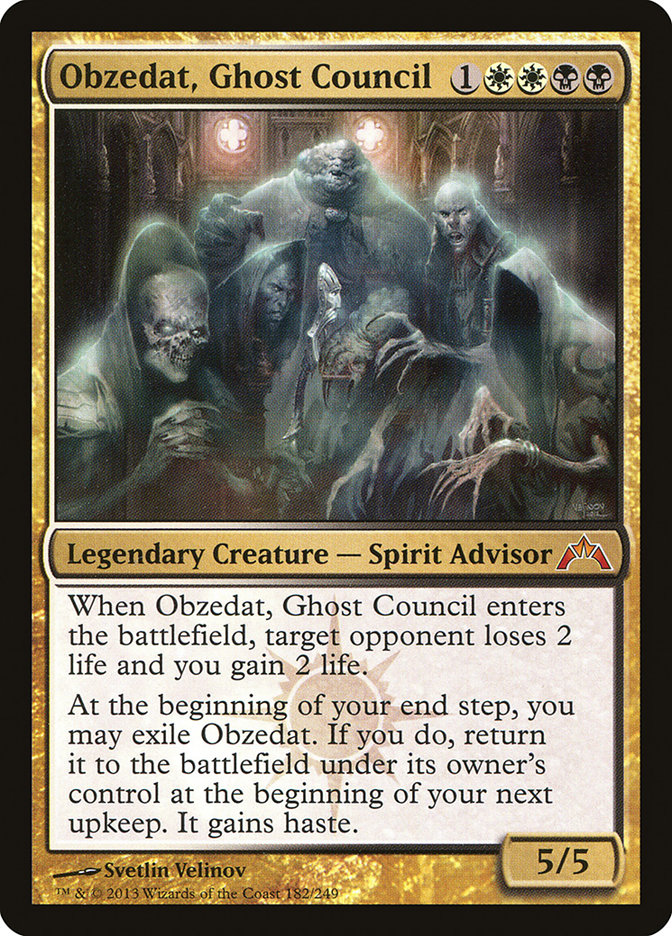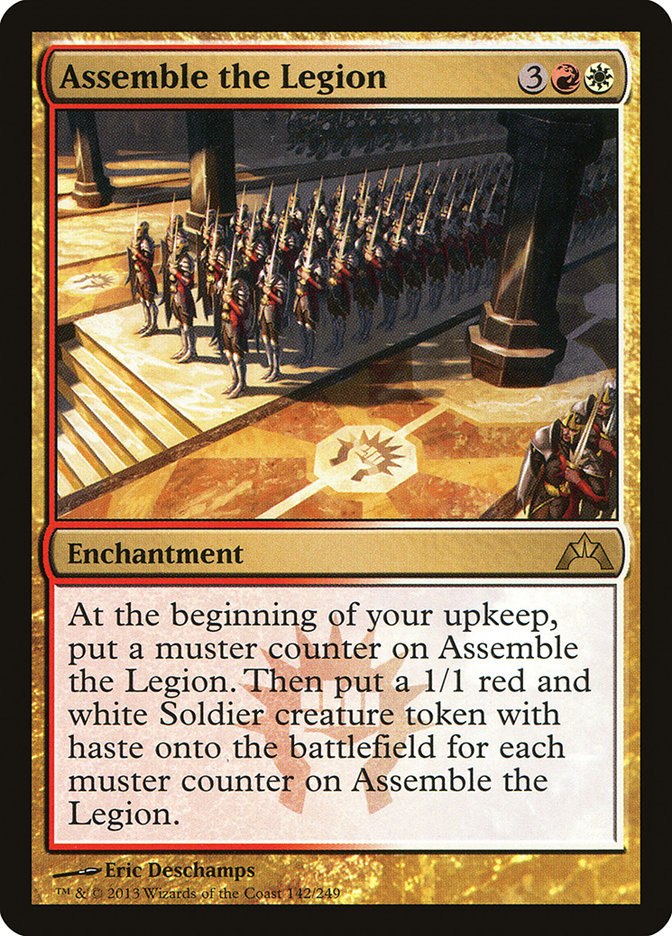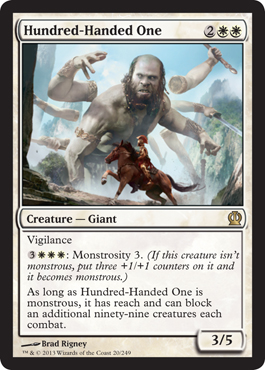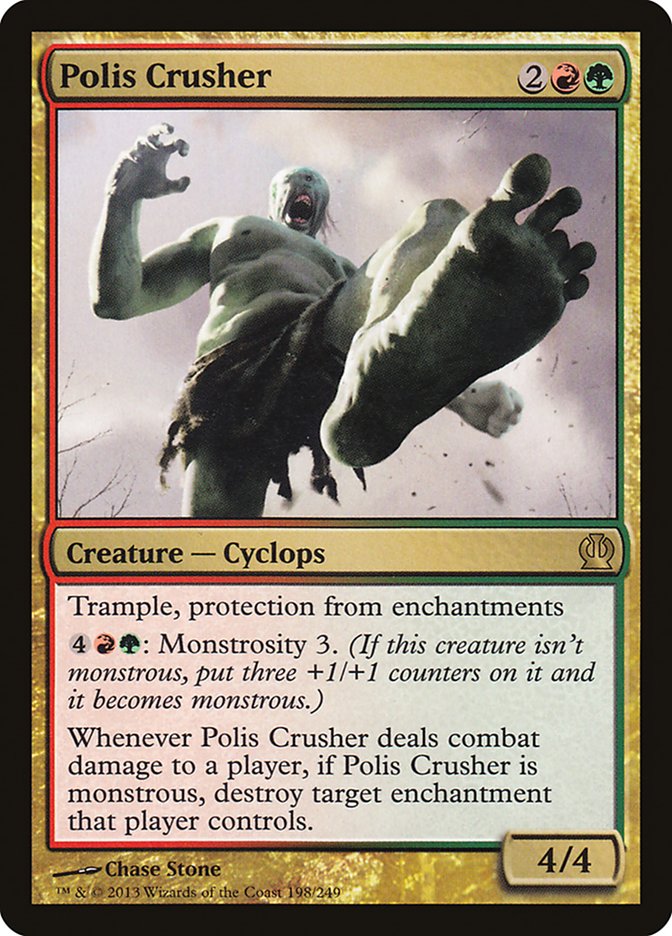Innistrad has a strong argument to be considered the single best Magic set ever printed. Personally, Time Spiral and Lorwyn will always hold the top spots for me purely for nostalgia reasons, as those were the sets I spent a lot of time with and came to love when I first picked up the game. From an objective perspective, however, it’s hard for me to say anything other than Innistrad is the best.
For Limited, the set was unbelievable. I consider triple Innistrad draft to be the best non-Cube Limited environment ever. Rares were fun but not overpowered. A deck full of synergistic commons and uncommons could easily dispatch any number of rares from the opponent. There were a ridiculous number of viable Draft archetypes. G/W Aggro, R/G Werewolves, U/B Control, U/W Fliers, U/G Delver, R/B Aggro, B/W Sacrifice, Spider Spawning, Burning Vengeance, and many more were potential archetypes. Almost anything was possible, and if you picked up the right synergies, almost anything was good.
Innistrad was the kind of set where your thirteenth pick was the kind of sideboard card you would use to win game 3 of the finals. Every pick mattered, and every card was useful in some situation. I can easily count the number of cards in the set that I never cast in a game of Limited on one hand (sorry, Gruesome Deformity). I absolutely relished the times where my twelfth pick Spare from Evil let me deal 50 points of damage to kill my opponent who was hiding behind a bunch of 1/2 Spiders from Spider Spawning and a healthy life total from Gnaw to the Bone. I loved nothing more than a sideboard Skeletal Grimace holding off a 20/20 Lumberknot while a Skirsdag Cultist sent damage at my opponent’s face.
Innistrad Limited was simply amazing.
The set was no slouch in terms of Constructed either. While the period where Delver dominated Standard was a bit of a smudge on Innistrad’s ledger, this past year of Standard has been one of the most diverse and ever-changing Standard environments we have ever seen. Without Titans and Phyrexian mana spells, Innistrad finally had a chance to shine in a balanced way. Cards that previously saw no play, like Blasphemous Act and Skirsdag High Priest, could showcase their true potential when combined with cards from Return to Ravnica block, such as Boros Reckoner and Cartel Aristocrat.
It’s easy to look back and hate cards like Thragtusk, Bonfire of the Damned, and Olivia Voldaren because those are the cards we’re currently tired of seeing. But truth be told, it was cards like those that really led to a fun, balanced, and interactive Standard environment that never grew stale even to the bitter end. In fact, none of those cards saw much play immediately. It took some time for people to catch on.
With that being said, I’m just as excited as everyone else for Theros. I loved Innistrad, and I’m not ashamed to admit it. But I also love change, fresh cards, and new experiences in Magic. I’m ready to let Innistrad go and jump feet first into a new Standard format where anything could happen.
This week Chris VanMeter and I had a chance to try out some new Theros cards in our Versus video for this Friday. It was pretty exciting to get to try out new stuff, and I was blown away by how awesome some of the cards were. Not only do they have amazing flavor, but they are just fun to play with as well.
I’d like to touch on some of the cool cards and interactions I see.
Good God!
We have seen four of the five Gods so far. Of those, I think the red God, Purphoros, is the strongest.
In a format where Thragtusk isn’t being blinked by Restoration Angel over and over again, we might forget just how little twenty life really is. His ability to deal two points of damage whenever any creature comes into play under your control can add up very quickly. His ability to repeatedly pump your team can also deal a pretty solid amount of damage over the course of a game.
Both of those abilities play very nicely with tokens. The deck I played in the video this week was built with that interaction in mind.
Creatures (15)
Lands (17)
Spells (28)

Ultimately, I don’t think this deck is particularly great. With that said, there were a lot of things I did like a lot, and I would like to touch on those some.
Young Pyromancer was very good with Purphoros. Purphoros already lets your creatures get some value, even if they just end up dying later, but Young Pyromancer lets your spells do the same thing as well. I had a few cool situations where I got to chain a few spells together with a Young Pyromancer and Purphoros in play and kill off a planeswalker in the process. Each spell creates a 1/1 token, and each token deals two damage to your opponent with this combo in effect. Purphoros’ activated ability also plays nice with the tokens from Young Pyromancer, letting them deal big chunks of combat damage or trade up for your opponent’s actual creatures.
Elspeth, Sun’s Champion was also simply amazing, both on her own and in combination with Purphoros. I love planeswalkers, so I may be a bit biased, but Elspeth seemed to immediately take over a game whenever she entered play. The difference between having the “create 3 Soldiers” ability being a +1 on this Elspeth versus a -2 on the prior Elspeth Tirel is a huge one. Elspeth immediately jumping to five loyalty puts her out of range of Warleader’s Helix, which is important. Without Thundermaw Hellkite in the format anymore, there aren’t as many cards to immediately punish Elspeth the turn she is played. Ghor-Clan Rampager could certainly be a problem, but I Smite know just the answer for that guy.
Hammer of Purphoros was a card I didn’t get to see much in action, but I feel like it could be a very powerful card. Giving all of your creatures haste is already pretty good value, but the ability to also make a 3/3 at instant speed can certainly be enough to hammer it home in plenty of board states. Sacrificing a land may seem like a steep cost, but it provides you with a constant stream of advantage in games where you’re flooding out. In games where you’re hitting the right number of lands, you should have enough creatures to really take advantage of the haste and shouldn’t need to use the activated ability anyway.
I also like the curve of Ash Zealot into Hammer of Purphoros into Purphoros himself. Ash Zealot and the Hammer conveniently have just the right amount of devotion to get Purphoros online, and Purphoros’ trusty Hammer is also conveniently willing to grant Purphoros haste so he can bash for six damage the turn he comes into play. Thwack.
With all the graveyard and flashback cards rotating out with Innistrad, Ash Zealot isn’t much more than a 2/2 first strike haste creature. Granted, that’s actually quite good, but there’s very similar two-drop that I actually like more than Ash Zealot when it comes to synergy with Purphoros.
Every time Precinct Captain connects, you get another 1/1 Soldier and another two damage. Each Soldier makes Purphoros’ +1/+0 ability better and better.
Another card that I think could be very good with Purphoros is Heliod, God of the Sun. Heliod can serve as a Mobilization, creating a constant stream of 2/1 creatures, which likewise turn Purphoros into a machine gun. Boros Reckoner conveniently provides huge devotion boosts to both Gods.
Creatures (18)
- 4 Precinct Captain
- 2 Obzedat, Ghost Council
- 4 Boros Reckoner
- 4 Fiendslayer Paladin
- 2 Heliod, God of the Sun
- 2 Purphoros, God of the Forge
Planeswalkers (2)
Lands (26)
Spells (14)

I’m not sure what the right count of Mountains you need for Chained to the Rocks is. My guess is that it’s probably thirteen-to-fourteen or so, much like Arbor Elf. If you’re greedy like me, you can get away with twelve. With fewer Mountains, it’s probably necessary to also cut down on copies of Chained to the Rocks.
Hopefully, as more of the spoiler is released, we’ll get some mana fixing to help out. Running ten basic lands in a three-color deck that’s trying to cast Obzedat is just gross.
There are a few interactions that I really like in this deck a lot. One is how Elspeth interacts with both Gods. Elspeth provides devotion to Heliod, and Heliod gives the tokens vigilance. Elspeth’s +1 is very good with Purphoros by virtue of dealing six damage to your opponent every time you activate it.
Another nice interaction is Heliod, God of the Sun and Obzedat, Ghost Council. Obzedat provides a good chunk of the devotion needed to turn Heliod into a creature, but when you blink out Obzedat at end of turn, Heliod can turn back into an enchantment. This can allow Heliod to dodge sorcery-speed removal like Chained to the Rocks.
Similarly, the only way to make Purphoros into a creature is to have multiple Boros Reckoners in play. Purphoros remaining as an enchantment could actually be a benefit. His ability is very powerful with a number of the cards in this deck, and I’m not sure if it’s entirely necessary to open him up to removal spells like Selesnya Charm and Chained to the Rocks when he can simply end a game entirely in his enchantment form.
I also like how Obzedat can trigger Purphoros every turn. Against decks like U/W/x Sphinx’s Revelation, it might be possible to simply grind them out by dealing four damage to them each turn with this combo. If they are relying on cards like Celestial Flare and Azorius Charm as removal, it’s certainly possible to get them the old-fashioned way. Never attack with Obzedat and just hope your bottle of Draino can unclog their life total.
Assemble the Legion is another option. It provides devotion to both Gods, and the tokens can get downright dirty with Purphoros’ triggered and activated abilities. The issue I have with Assemble is how slow it is to get going and how underwhelming it always seems to be in practice. Still, it isn’t a card I would immediately rule out.
Chained to the Rocks being able to remove a blocker and simultaneously turn Heliod into a creature is nothing to scoff at. Inanimate though they may be, the rocks are fully devoted to the true god of Theros. If you guessed Heliod, you’re probably wrong. We all know it’s just Nicol Bolas pulling some strings from behind the scenes . . . yet again. Never count out the Nasty Bolasty.
Read the Bones is a neat card. It’s basically the mutant child of Preordain, Sign in Blood, and Divination. It’s hard to say how good the card will be because it depends entirely on how aggressive the format is and how often you will need to shock yourself with your own mana base. When your opponent is slapping down a bunch of one-drop creatures and smacking you up with them, you don’t exactly have the kind of time to cast Divinations that also hit you for some precious life points. If your opponent is chaining Azorius Charms into Sphinx’s Revelations, you probably can stop off and check out some bones on the way. It really just comes down to the format.
Monster Mash
A number of writers have already touched on Polukranos, World Eater. I think that card is very good and simply the tip of the iceberg when it comes to the monstrosity keyword. I always love a good creature that gives you more options later in the game when it has gone long or when you’re starting to flood out.
I don’t think monstrosity is something you really plan for and wouldn’t want to run a monstrous creature unless that creature is actually good enough on its own merits, but having the option of turning one of your guys into something enormous later on in the game is certainly nothing to ignore. Polukranos is pretty good, but I think there are actually a few more that may end up being good enough to get the job done as well.
The first is “E. Honda,” or Hundred-Handed One. In addition to just being the coolest card in the set by far, Hundred-Handed One is a card that I think might have what it takes to actually make it in the real world. To start with, Hundred-Handed One has the desired five toughness needed to survive in a world of Mizzium Mortars and Warleader’s Helix.
Secondly, he’s pretty much a strict upgrade on Siege Mastodon, and we know that Siege Mastodon is already a multi-format all-star. Those formats were both core set Limited environments and the term “all-star” involves some serious creative license, but bear with me here.
One of the dominant decks in Block Constructed is Mono-Red Aggro, a deck that [author name="Jon Agley"]Jon Agley[/author] covered yesterday. If you can manage to kill their Firefist Strikers, the best cards you can have against them are simply good blockers. Precinct Captain and Ash Zealot are good in Block purely for this reason.
I was always in the market for a good four-drop to really clog the ground against that deck. The best were cards like Trostani, Selesnya’s Voice and Advent of the Wurm, but Trostani required a huge commitment to green and white and Advent couldn’t block with Legion Loyalist active. Hundred-Handed One really fills that role perfectly. Not only does it have the chance to smack them up every turn since they definitely aren’t blocking, once you go monstrous the game has essentially ended. A deck with a swarm of 1/1s and 2/2s is going to have a hard time smashing through a 6/8 creature that can block everything. Did I mention that he also dodges Mizzium Mortars?
The ability to activate monstrous at instant speed can really mess up combat for your opponent. One thing you can do is swing with Hundred-Handed One into a bigger defending creature. If they block, you go monstrous and kill their guy. If they don’t block, then you can just get a free three points of damage and cast something else afterward.
Another neat interaction is that you can block a Boros Reckoner as a 3/5. If the Reckoner sends that three damage at Hundred-Handed One to finish him off, you can then activate the monstrous ability to jump out of range and survive.
Casual Hundo isn’t the only monstrous creature that has caught my eye however. I think Polis Crusher not only has an awesome name but might actually be good enough to see play. Polis Crusher bears a lot of similarity to Ghor-Clan Rampager. It’s a 4/4 trampler for four with upside. Ghor-Clan is much more impactful early in the game, but if enchantments end up being as much of a thing in Theros as we’re led to believe, both of Polis Crusher’s abilities could end up being huge . . . monstrous even.
Protection from enchantments at the very least means he can’t be Chained to the Rocks or blocked by any of the Gods. Going monstrous not only means that he will be an enormous 7/7 trampler with protection but that every time he connects he’s going to serve as a removal spell as well.
With cards like Satyr Hedonist and Sylvan Caryatid in the format, I think it’s definitely possible to construct a Big R/G deck that uses planeswalkers like Domri Rade; Garruk, Caller of Beasts; and the newly spoiled Xenagos, the Reveler to drop a never-ending chain of fat creatures into play, like Gruul Ragebeast and Ruric Thar, the Unbowed. Polukranos and Polis Crusher both strike me as perfect creatures for this style of deck. They come down early enough to have an impact in the early turns of the game, but they’re also just as big if not bigger in the later turns as your six- and seven-drops can be.
The last thing I want to point out is a pretty obvious one. Thoughtseize is now in the format. If you’re not familiar with Thoughtseize, it combos pretty well with black mana and your opponent having cards in hand. I expect this card to see a lot of play and hopefully give life to a lot of archetypes that otherwise could never beat a Sphinx’s Revelation.
What might not be obvious about Thoughtseize is that there is a huge cost to it. With shocklands already giving aggressive decks a free two-to-six damage a game, adding another few points with Thoughtseize is certainly nothing to sneeze at. Just because a card is good in almost every format doesn’t mean that it doesn’t come without drawback or cost. It’s certainly possible that decks just won’t have the liberty to shock themselves and Thoughtseize will be fully relegated to sideboard duty.
Or maybe not. Anything could happen in the next 150 cards. Enchantments turning into creatures. Creatures turning into enchantments. Monsters with hundreds of hands. Polis getting crushed at will. It’s a mad, mad world out there, and I love every minute of it.
Brian Braun-Duin
@BraunDuinIt on Twitter
BBD on Magic Online

